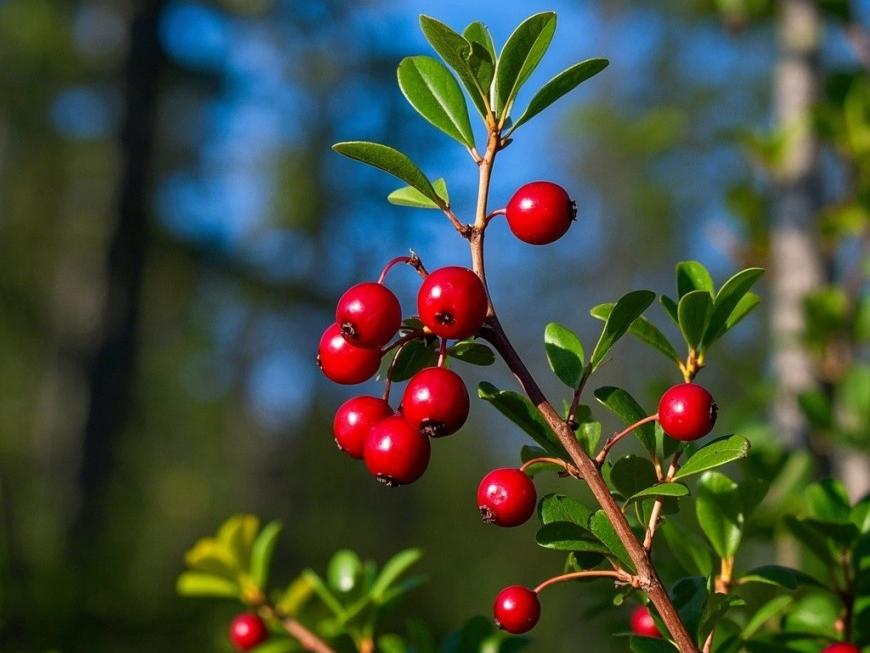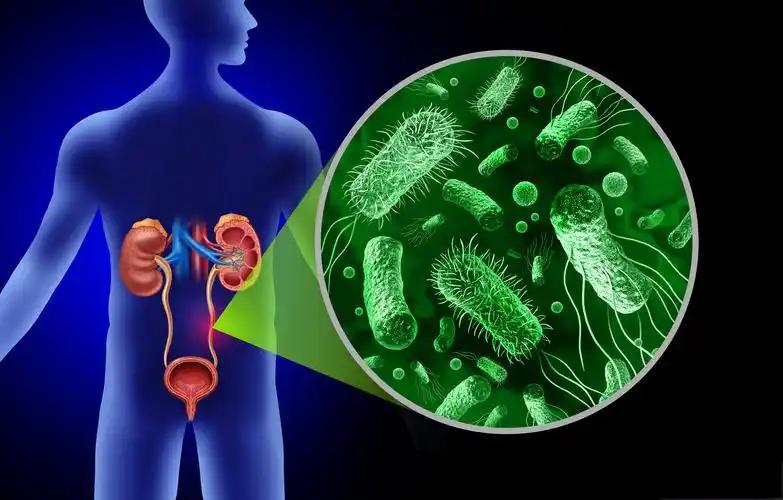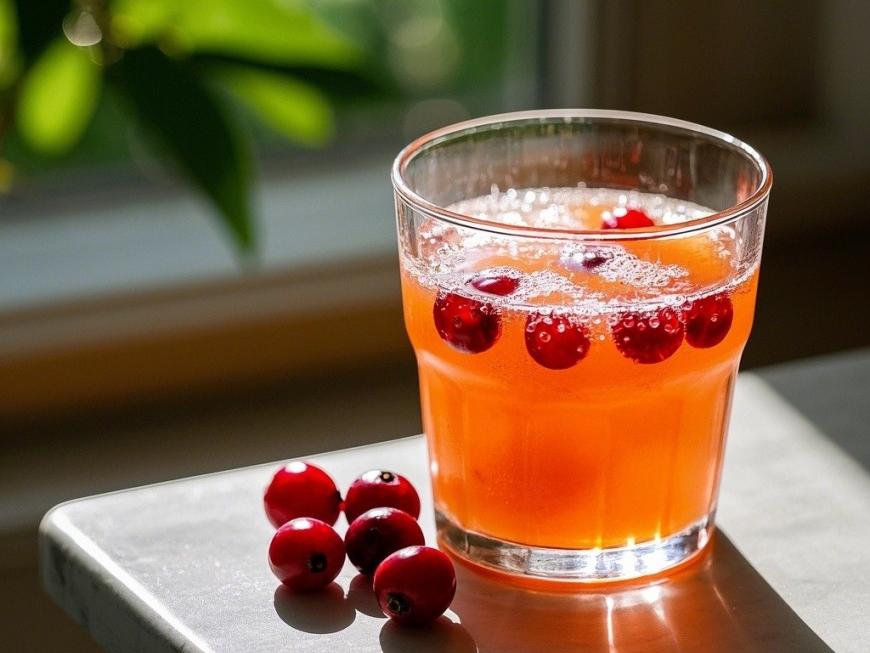Study on Cranberry Extract for UTI
Urinary tract infection (UTI) is a common infectious disease of the urinary system. Bacterial colonization is its main feature. Globally, about 150 million people develop a urinary tract infection each year [1]. In 2007, in the United States alone, about 10.5 million people visited the doctor with UTI symptoms [2], while domestic reports show that the prevalence of urinary tract infections in China is 0.9% [3], especially among young people in their 20s and the elderly over 85 years old. The incidence of UTIs in women is much higher than in men, with about 10% of women experiencing an average of one urinary tract infection per year. Up to 85% of urinary tract infections are caused by uropathogenic Escherichia coli (UPEC). The application of antibiotics is the gold standard for the prevention and treatment of UTIs (such as fluoroquinolones, aminoglycosides and carbapenems). However, patients have a high recurrence rate and bacterial resistance, which may significantly increase the economic burden of infected patients [4-6].
In recent years, naturopathy has become a research hotspot for disease prevention, and scholars have gradually begun to seek alternatives to non-antibiotic substances or reduce the use of antibiotics in the treatment of UTI [7]. In China, plants have been used to treat diseases for thousands of years. Many plants have the ability to inhibit bacteria and treat urinary tract infections. Their active ingredients and antibacterial abilities are different. At present, bioactive substances such as flavonoids, alkaloids, and terpenes have been found in many plants that can treat urinary tract infections. They are usually found in the fruits, flowers, stems, leaves, and other parts of plants. Cranberries, which are small fruits, are one of these [8].

1 Characteristics of cranberries
Cranberries (Vaccinium macrocarpon), also known as cranberries, are small, bright red round fruits that grow on shrubs. They are about 1 cm in diameter, slightly sweet and sour, and grow in acidic swamps and sandy soil in the temperate to frigid zones of the Northern Hemisphere. They are currently mainly cultivated in the eastern and northeastern United States and most of Canada[9]. Cranberries are mainly found in the wild in China, mainly distributed in the Greater Khingan Range region. In 2015, large-scale artificial cultivation began in Fuyuan City, Heilongjiang Province[10]. Cranberries are popular for their high water content, low calories, high fiber and many minerals. A large number of plant compounds with biological activity, such as flavonoids, can be extracted, and it has been confirmed that they have various effects on human health. The antioxidant properties of these extracts make them effective in preventing cardiovascular disease, delaying aging, and even fighting tumors [11]. Studies have also found that cranberry's bioactive ingredients have antibacterial properties, which can effectively prevent UTIs by preventing bacterial invasion of the urinary system[12] . Health care products containing cranberry-related extracts have been developed on the market.
With the increase in global antibiotic resistance and the recurrence rate of urinary tract infections, people are exploring and evaluating new treatment strategies for anti-adhesion components. Consumption of cranberries has been shown to effectively reduce the incidence and severity of UTIs in women and prevent the adhesion of pathogenic bacteria in the urinary tract [13].
2 Pathogenesis of urinary tract infections
UTIs are caused by a variety of pathogens, including gram-negative and gram-positive bacteria and fungi. UTIs caused by direct invasion by pathogenic bacteria are also known as uncomplicated UTIs. The common causative bacteria are Escherichia coli, Klebsiella pneumoniae, Staphylococcus saprophyticus, Enterococcus faecium, etc.[14]; UTIs caused by multiple factors are known as complicated UTIs, which are usually related to the retention of medical devices such as catheters, abnormalities of the urinary tract, chronic underlying diseases, etc., and the common pathogenic bacteria are Escherichia coli, Enterococcus, Klebsiella pneumoniae, Candida, etc.[15] . In the pathological process, pathogen adhesion is a key step in the development of UTIs, which can be roughly divided into three steps: adhesion, invasion and colonization, and the release of virulence factors, etc., which cause pathological reactions in the host[16] .
Clinically, urinary tract infections can be divided into ascending infections, hematogenous infections, direct infections and lymphatic infections according to the route of infection. Ascending infections are the main route of urinary tract infections. Fecal pathogens ascend through the urethra, colonize the urethra with the help of bacterial hairs or flagella, and migrate to the bladder. Among women, the incidence rate is higher than that in men because their urethra is short and straight, and is close to the anus. In addition, anatomical changes in the urinary system during pregnancy, such as the female uterus pressing on the bladder, as well as the reduced immunity and special physiological changes in hormone levels during pregnancy, also increase women's susceptibility to UTIs [17].

3. The inhibitory effect of cranberries on common urinary tract infection bacteria
Cranberries contain >80% water, 10% fructose (glucose and fructose), and other plant components such as anthocyanins, flavonoids, terpenes, and catechins. Their antibacterial effects have long been reported [18]. The anthocyanin/proanthocyanidin complex in cranberries is often an effective anti-adhesion compound. In vivo animal experiments have confirmed the outstanding effect of cranberry extract in preventing urinary tract infections. The main mechanism is that cranberries reduce the adhesion of uropathogenic Escherichia coli and urethral epithelial cells, weakening colonization and subsequent infection [19]. However, the specific in vivo mechanism that explains the potential preventive effect of cranberries has not yet been determined [20].
Proanthocyanidins are a substance found in cranberries. Proanthocyanidins, also known as condensed tannins, account for about 63% to 71% of the total content of phenolic compounds in cranberries. They are currently internationally recognized as the most effective natural antioxidants for scavenging free radicals in the human body. Unlike other berries and fruits, the proanthocyanidins in these plants are all linked by flavan bonds of type B. whereas the proanthocyanidins in cranberries contain one or more flavan-3-ols with A-type flavan bonds. The A-type flavan bonds can compete with the exogenous lectin on the bacterial cilia, preventing the bacteria from binding to the cell receptor. By competitive inhibition, the adhesion of Escherichia coli pili to urinary tract epithelial cells can be directly inhibited [7, 21]. Given the scarcity of plants rich in proanthocyanidins with a flavan-3-ol-rich structure, the prevention of urinary tract infections can be said to be a unique, side-effect-free health benefit of cranberries.
In addition, under weakly acidic conditions, nitrite undergoes a disproportionation reaction to form nitrogen dioxide (NO 2 ) and nitric oxide (NO). NO exhibits time- and dose-dependent bacteriostatic activity in vivo. Therefore, cranberries or their proanthocyanidin extracts may promote the conversion of acidified nitrite to NO, thereby exerting their effect of preventing UTIs [7]. Other studies have reported that proanthocyanidins can also exert an antibacterial effect by inhibiting the inflammatory cascade reaction, that is, the immune response to bacterial invasion [12]. Among these, proanthocyanidin A is the main biologically active substance that inhibits the growth of uropathogenic Escherichia coli [22]. In addition to proanthocyanidins, the catechol, benzoic acid, vanillic acid, etc. also have an in vitro anti-adhesion effect on uropathogenic Escherichia coli [23].
In addition, the mechanism by which cranberries prevent UTIs has not yet been fully established, but there are currently several widely accepted hypotheses. One is that their high proanthocyanidins content can change the ability of UPEC, the main pathogen of UTIs, to adhere to human uroepithelial cells (HUC). By changing the P-pili structure of the bacteria or binding to the P-pili of the bacteria, making it difficult to adhere to the cells of the urinary tract and bladder, and thus being excreted with the urine, thereby achieving the prevention and treatment of UTIs [24]; second, inhibiting the activity of the flagella of Escherichia coli and reducing the overall motility of the bacteria [25]; third, cranberries have virulence factors that inhibit bacterial invasion [26].

4 Clinical research results
4.1 The effect of cranberries in reducing UTIs in specific populations
The effect of cranberries in reducing UTIs has been studied in many specific populations, including women, children and pregnant women. One study showed that among 182 women who had two or more UTIs in the past year, after taking 500 mg/day cranberry for 6 months, there was a significant reduction in urinary tract infections, and the time to first UTI was delayed compared to the control group [27]. This is consistent with the findings of Maki et al. [28]. Cranberries are not only effective in women, but also in children. In another study, the proportion of children with recurrent urinary tract infections who took cranberry capsules was significantly lower than that of the control group, and there were no side effects [29].
In a randomized controlled trial by Wing et al. [30] with 188 pregnant women up to the 16th week of pregnancy, the efficacy of cranberry juice was compared with that of a placebo. The results showed that the incidence of symptomatic UTIs was reduced by 41% in the group that took cranberry juice three times a day. In addition, the Japanese JAID/JSC Infectious Disease Guidelines 2015 Edition – Urinary Tract Infections and Male Reproductive Infections states that postmenopausal women can prevent recurrent cystitis by consuming 65% cranberry juice daily. Similarly, two recent systematic reviews have shown that cranberries are one of the effective alternative strategies for preventing UTIs in adults [31-32]. Cranberry products may be effective for specific populations and have a low risk of adverse reactions and do not carry the risk of bacterial resistance associated with antibiotics. However, larger, well-designed trials are needed to make strong recommendations.
4.2 Combined application
In addition, to enhance the efficacy of cranberries, combinations of cranberries and other natural products with antibacterial properties can be used. Bruyère et al. [33] used a combination of propolis and cranberries in women with recurrent cystitis. The results showed that the patients had fewer cystitis attacks and prevented the occurrence of further UTIs by blocking ascending infections. Propolis is a resinous substance collected by honeybees from the buds and trunks of plants. It has antibacterial, anti-infective, anti-tumour and immunomodulatory effects[34]. Propolis can enhance the effect of cranberry anthocyanins on UPEC adhesion, motility and biofilm formation, iron ion metabolism and stress response[20]. Montors et al. [35] also confirmed the effectiveness of combined intake of Lactobacillus rhamnosus, cranberries and vitamin C in preventing recurrent urinary tract infections in a preliminary study. Therefore, combined treatment can be an interesting new treatment strategy for preventing recurrent UTIs.
4.3 Mode of intake
Cranberries function in various preparations such as juice, tablets, syrup, capsules and powder. The concentration of cranberry extract varies between the different preparations. Cranberry cocktails made from cranberries have been shown in in vitro studies to prevent the adhesion of 80% of Escherichia coli isolates in 240 mL of cranberry cocktail, and this effect lasts for 10 hours after consumption [36]. If taken as a juice for treatment, some studies have shown that an average daily intake of 300 mL of cranberry juice (containing 36 mg of proanthocyanidins) can reduce UTIs [37]. However, Howell and colleagues believe that if taken in the form of cranberry powder, 72 g of proanthocyanidins per day is needed to prevent bacterial adhesion in the urinary tract [38]. Therefore, the optimal concentration and dosage of cranberries for various intake methods needs to be confirmed in practice [39].

4.4 Clinical evidence compared with antibiotics
Long-term use of antibiotics has been studied in many specific populations, including women, children, and pregnant women. One study showed that Among 182 women who had had two or more UTIs in the past year, cranberry consumption of 500 mg/d for 6 months significantly reduced the incidence of urinary tract infections compared to the control group, with the first UTI occurring later [27]. This is consistent with the findings of Maki et al. [28]. Cranberries are not only effective in women, but also in children. In another study, the proportion of children with recurrent urinary tract infections who took cranberry capsules was significantly lower than that of the control group, and there were no side effects [29].
In a randomized controlled trial by Wing et al. [30] with 188 pregnant women up to the 16th week of pregnancy, the efficacy of cranberry juice was compared with that of a placebo. The results showed that the incidence of symptomatic UTIs was reduced by 41% in the group that took cranberry juice three times a day. In addition, the Japanese JAID/JSC Infection Treatment Guidelines 2015 Edition – Urinary Tract Infections and Male Reproductive Infections states that daily consumption of 65% cranberry juice by postmenopausal women can prevent urinary tract infections from developing resistance. Recent treatment methods tend to favour non-antibiotic prevention or use. Cranberries are a useful alternative, and their use does not generate resistance. Two studies have compared the efficacy of cranberry extract with that of low-dose antibiotics.
In a double-blind randomized trial comparing the use of cranberry capsules with trimethoprim-sulfamethoxazole, antibiotic prophylaxis was more effective in reducing the risk of recurrent UTIs, but at the cost of increasing antibiotic resistance [40]. This is also a common problem with the clinical application of antibiotics for the treatment of UTIs. Meanwhile, McMurdo et al. [41] compared the therapeutic effects of cranberry capsules and the antibiotic trimethoprim in reducing recurrent UTIs, and the results showed that the efficacy of the two was almost the same. In addition, probiotics, estrogens, D-mannose, etc. can also be used as alternatives to antibiotics for the prevention of UTIs [42].

5 Conclusion
The use of antimicrobial agents remains an important measure for the prevention and treatment of UTIs. However, with the widespread use of antimicrobial agents, bacterial resistance has increased significantly. At this stage, clinical trials are gradually pursuing non-antibiotic treatment options. Cranberries, which contain a variety of phenolic substances, have been widely recommended for the prevention of UTIs and the relief of adverse symptoms. Existing clinical trials support the use of cranberry products as an alternative to antibiotic treatment of UTIs. However, it is still believed that the effectiveness of cranberries depends on the individual and/or the case. In addition, the mechanism of cranberry's anti-adhesion activity has not yet been fully elucidated, and other mechanisms may also be involved, which still need to be further studied, especially the specific efficacy of cranberry's single extract.
Reference
[1]GARIMELLA P S , BARTZ T M , IX J H , et al . Urinary uromodulin and risk of urinary tract infections : the cardiovascular health study[J] .Am J Kidney Dis , 2017 , 69(6) :744-751.
[2]SCHAPPERT S M , RECHTSTEINER E A. Ambulatory medical care utilization estimates for 2007[J] .Vital Health Stat 13 , 2011(169) : 1-38.
[3] Wang F, Zhang YY. Practical anti-infective therapy [J]. 3rd ed. Beijing: People's Medical Publishing House, 2020: 647.
[4]FOXMAN B. Urinary tract infection syndromes : occurrence , recurrence , bacteriology, risk factors , and disease burden[J] .Infect Dis Clin North Am , 2014 , 28(1) : 1-13.
[5]TAMADONFAR K O , OMATTAGE N S , SPAULDING C N , et al. Reaching the end of the line : urinary tract infections[J] . Microbiol Spectr , 2019 , 7(3) : 1.
[6]GUPTA K , GRIGORYAN L , TRAUTNER B. Urinary tract Infection[J] .Ann Intern Med , 2017 , 167(7) :ITC49-ITC64 .
[7]SIHRA N , GOODMAN A , ZAKRI R , et al . Nonantibiotic p revention and management of recurrent urinary tract infection[J] .Nat Rev Urol , 2018 , 15(12) :750-776.
[8] Guo Hangfan, Wang Ping. Research progress on the inhibition of urinary tract infections by plant active substances [J]. Chinese Journal of Modern Applied Pharmacy, 2021, 38(15): 1907-1914.
[9]ZHAO S , LIU H , GU L.American cranberries and health benefits- an evolving story of 25 years[J] .J Sci Food Agric , 2020 , 100(14) : 5111-5116.
[10] Wang Zhenwei. Research on the development and industrial application of cranberry yogurt [D]. Shanghai: East China University of Science and Technology, 2021.
[11] Wei Yan, Zhan Ziyi, Zhang Yu. Research progress on the bioactive substances and main physiological functions of cranberries [J]. Food Research and Development, 2017, 38(10): 219-224.
[12]VASILEIOU I , KATSARGYRIS A , THEOCHARIS S , et al . Current clinical status on the p reventive effects of cranberry consumption against urinary tract infections[J] .Nutr Res , 2013 , 33(8) : 595-607.
[13]KIMBLE L L , MATHISON B D , KASPAR K L , et al . Development of a fluorometric microplate antiadhesion assay using uropathogenic Escherichia coli and human uroepithelial cells[J] .J Nat Prod , 2014 , 77(5) : 1102-1110.
[14]BEEREPOOT M A , TER RIET G , NYS S , et al .Lactobacilli vs antibiotics to prevent urinary tract infections : a randomized , double-blind , noninferiority trial in postmenopausal women [J] . Arch Intern Med , 2012 , 172(9) :704-712.
[15]FLORES-MIRELES A L , WALKER J N , CAPARON M , et al . Urinary tract infections : epidemiology , mechanisms of infection and treatment options[J] .Nat Rev Microbiol , 2015 , 13(5) : 269- 284.
[16]TOTSIKA M , MORIEL D G , IDRIS A , et al . Uropathogenic Escherichia coli mediated urinary tract infection[J] . Curr Drug Targets , 2012 , 13(11) : 1386-1399.
[17]KALINDERI K , DELKOS D , KALINDERIS M , et al . Urinary tract infection during pregnancy : current concepts on a common multifaceted p roblem[J] .J Obstet Gynaecol , 2018 , 38 (4) : 448- 453.
[18]BERGEL , D H.Geigy scientific tables[J] .Cardiovasc Res , 1991 , 25(8) :704.
[19]ZAFRIRI D , OFEK I , ADAR R , et al . Inhibitory activity of cranberry juice on adherence of type 1and type P fimbriated Escherichia coli to eucaryotic cells [ J] . Antimicrob Agents Chemother , 1989 , 33(1) :92-98.
[20]RANFAING J , DUNYACH-REMY C , LOUIS L , et al .Propolis potentiates the effect of cranberry ( vaccinium macrocarpon) against the virulence of uropathogenic Escherichia coli[J] . Sci Rep, 2018 , 8(1) : 10706.
[21]KYLLI P , NOHYNEK L , PUUPPONEN-PIMIÄ R , et al . Lingonberry ( Vaccinium vitis-idaea) and European cranberry
(vaccinium microcarpon) proanthocyanidins : isolation , identification , and bioactivities[J] .J Agric Food Chem , 2011 , 59(7) :3373-3384.
[22]FELICIANO R P , KRUEGER C G , REED J D. Methods to determine effects of cranberry proanthocyanidins on extraintestinal infections : relevance for urinary tract health[J] . Mol Nutr Food Res , 2015 , 59(7) : 1292-1306.
[23]DE LLANO D G , ESTEBAN-FERNÁNDEZ A , SÁNCHEZ- PATÁN F , et al . Anti-adhesive activity of cranberry phenolic compounds and their microbial-derived metabolites against uropathogenic escherichia coli in bladder epithelial cell cultures [J] .Int J Mol Sci , 2015 , 16(6) : 12119-12130.
[24]GUPTA A , DWIVEDI M , MAHDI A A , et al . Inhibition of adherence of multi-drug resistant E.Coli b y p roanthocyanidin[J] . Urol Res , 2012 , 40(2) : 143-150.
[25]NICOLOSI D , TEMPERA G , GENOVESE C , et al . Anti- adhesion activity of a2-type p roanthocyanidins ( a cranberry major component ) on uropathogenic E. coli and P. mirabilis Strains[J] .Antibiotics (Basel) ,2014 , 3(2) : 143-154.
[26]POLEWSKI M A , KRUEGER C G , REED J D , et al .Ability of cranberry p roanthocyanidins in combination with a p robiotic formulation to inhibit in vitro invasion of gut epithelial cells b y extra-intestinal pathogenic E.coli[J] .J FUNCT FOODS , 2016 , 25 : 123-134.
[27]VOSTALOVA J , VIDLAR A , SIMANEK V , et al . Are high p roanthocyanidins key to cranberry efficacy in the p revention of recurrent urinary tract infection ? [J] .Phytother Res , 2015 , 29(10) : 1559-1567.
[28]MAKI K C , NIEMAN K M , SCHILD A L , et al . The effect ofcranberry juice consumption on the recurrence of urinary tract infection : relationship to baseline risk factors [J] . J Am Coll Nutr , 2018 , 37(2) : 121-126.
[29]DOTIS J P A , PRINTZA N E A. Cranberry standardized capsules may prevent recurrences of urinary tract infections in children[J] .Aristotle University of Thessaloniki , 2018(1) : 1.
[30]WING D A , RUMNEY P J , PRESLICKA C W , et al . Daily cranberry juice for the p revention of asym ptomatic bacteriuria in pregnancy : a randomized , controlled pilot study[J] .J Urol , 2008 , 180(4) : 1367-1372.
[31]XIA J Y , YANG C , XU D F , et al .Consumption of cranberry as adjuvant therapy for urinary tract infections in susceptible populations : a systematic review and meta-analysis with trial sequential analysis[J] .PLoS One , 2021 , 16(9) :e0256992.
[32]MEENA J , THOMAS C C , KUMAR J , et al . Non-antibiotic interventions for p revention of urinary tract infections in children : a systematic review and meta-analysis of randomized controlled trials[J] .Eur J Pediatr , 2021 , 180(12) :3535-3545.
[33]BRUYÈRE F , AZZOUZI A R , LAVIGNE J P , et al . A Multicenter , randomized ,placebo-controlled study evaluating the efficacy of a combination of p ropolis and cranberry ( vaccinium macrocarpon) ( DUAB® ) in p reventing low urinary tract infection recurrence in women complaining of recurrent cystitis [J] .Urol Int , 2019 , 103(1) :41-48.
[34]BOONSAI P , PHUWAPRAISIRISAN P , CHANCHAO C. Antibacterial activity of a cardanol from thai apis mellifera p ropolis[J] .Int J Med Sci , 2014 , 11(4) :327-336.
[35]MONTORSI F , GANDAGLIA G , SALONIA A , et al . Effectiveness of a Combination of Cranberries , Lactobacillus rhamnosus , and vitamin C for the management of recurrent urinary tract infections in women : results of a pilot study[J] .Eur Urol , 2016 , 70(6) :912-915.
[36]HOWELL A B , FOXMAN B. Cranberry juice and adhesion of antibiotic-resistant uropathogens [J] . JAMA , 2002 , 287 ( 23 ) : 3082-3083.
[37]AVORN J , MONANE M , GURWITZ J H , et al . Reduction of bacteriuria and pyuria after ingestion of cranberry juice [J] . JAMA , 1994 , 271(10) :751-754.
[38]HOWELL A B , BOTTO H , COMBESCURE C , et al . Dosage effect on uropathogenic Escherichia coli anti-adhesion activity in urine following consumption of cranberry powder standardized for p roanthocyanidin content : a multicentric randomized double blind study[J] .BMC Infect Dis , 2010 , 10 : 94.
[39]LUÍSÂ , DOMINGUES F , PEREIRA L. Can Cranberries contribute to reduce the incidence of urinary tract infections ? A systematic review with meta-analysis and trial sequential analysis of clinical trials[J] .J Urol , 2017 , 198(3) : 614-621.
[40]BEEREPOOT M A , TER RIET G , NYS S , et al .Cranberries vs antibiotics to prevent urinary tract infections : a randomized double-blind noninferiority trial in premenopausal women [J] . Arch Intern Med , 2011 , 171(14) : 1270-1278.
[41]MCMURDO M E , ARGO I , PHILLIPS G , et al . Cranberry or trimethop rim for the p revention of recurrent urinary tract infections ? A randomized controlled trial in older women [J] .J Antimicrob Chemother , 2009 , 63(2) :389-395.
[42]BAREA B M , VEERATTERAPILLAY R , HARDING C. Nonantibiotic treatments for urinary cystitis : an update[J] .Curr Opin Urol , 2020 , 30(6) :845-852.


 English
English French
French Spanish
Spanish Russian
Russian Korean
Korean Japanese
Japanese






